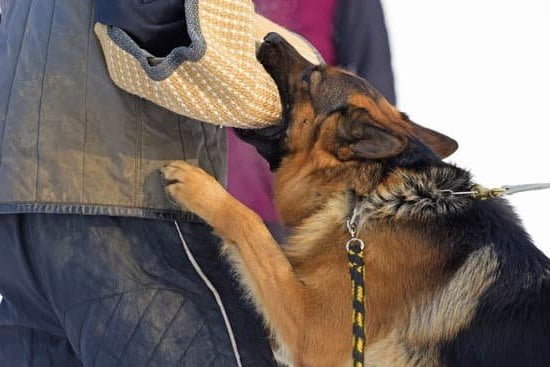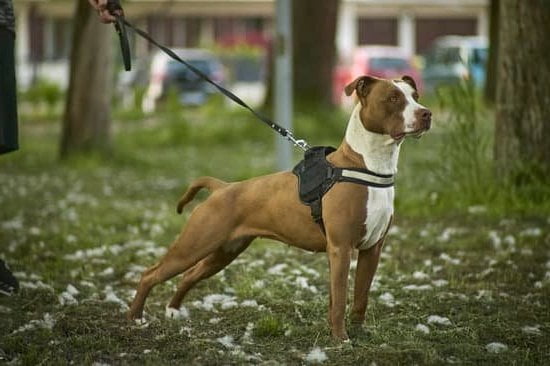Ecollar dog training has become an increasingly popular method for effectively training and communicating with dogs. Whether you’re teaching basic obedience or addressing behavioral issues, using an ecollar can be a valuable tool in your training arsenal. This article will provide a comprehensive guide to ecollar dog training, covering everything from understanding the basics to advanced techniques and troubleshooting common issues.
In this section, we will delve into the fundamentals of ecollar dog training, including what it is and how it works. We will also explore the benefits of using ecollars for training and debunk some common misconceptions surrounding this method. Additionally, we will discuss the future of ecollar dog training and what pet owners can expect moving forward.
Ecollar dog training has garnered both praise and criticism in the pet community, but when used correctly, it can be a humane and effective way to train dogs. Whether you’re new to ecollar training or looking to improve your existing knowledge, this article aims to provide a comprehensive understanding of this method and its potential benefits for both you and your furry companion.
Understanding the Basics of Ecollar Dog Training
How Ecollar Training Works
Ecollar dog training, also known as electronic collar training or remote training, involves the use of a handheld remote and a receiver collar that is worn by the dog. The trainer uses the remote to deliver a mild electrical stimulation to the dog’s neck when necessary. It is important to note that modern ecollars have adjustable levels of stimulation, which allows trainers to find the most appropriate level for each individual dog.
The Principles of Ecollar Dog Training
The main principle behind ecollar dog training is to create clear communication between the handler and the dog. This type of training allows for precise feedback regardless of the distance between the trainer and the dog. In addition, ecollar training enables trainers to reinforce commands from a distance, improving off-leash control and safety.
Building Trust With Your Dog
When it comes to using an ecollar for training, it is essential to build trust with your furry companion. This involves introducing the ecollar in a positive manner and associating it with rewards instead of punishment. Positive reinforcement should always be at the core of any training method, including ecollar dog training. When used correctly and responsibly, an ecollar can be a valuable tool for enhancing communication and strengthening your bond with your pet.
Choosing the Right Ecollar for Your Dog
When it comes to ecollar dog training, choosing the right ecollar for your dog is crucial. There are different types of ecollars available on the market, and selecting the best one for your dog depends on various factors such as size, temperament, and specific training needs.
One important consideration when choosing an ecollar is the size of your dog. Small dogs may require a lighter and more compact ecollar, while larger breeds may need a sturdier model. It’s essential to find an ecollar that fits comfortably around your dog’s neck without causing any discomfort or irritation.
Another factor to consider is the temperament of your dog. Some dogs may be more sensitive to the stimulation from an ecollar, while others may require a stronger sensation to get their attention. Understanding your dog’s temperament will help you select an ecollar with the appropriate level of stimulation.
It’s also important to assess your specific training needs when choosing an ecollar. Are you looking to address behavioral issues, obedience training, or hunting-related training? Different ecollars come with varying features and levels of stimulation, so it’s essential to choose one that aligns with your training goals.
| Factor | Consideration |
|---|---|
| Size | Find an ecollar that fits comfortably around your dog’s neck |
| Temperament | Assess if your dog is more sensitive or requires stronger sensation for attention |
| Training Needs | Select an ecollar with features and stimulation levels aligned with your goals |
Step-by-Step Guide to Introducing Your Dog to the Ecollar
Introducing your dog to an ecollar can be a daunting task, but with the right approach, it can be a smooth and positive experience for both you and your furry friend. The first step in introducing your dog to the ecollar is to ensure that they are comfortable wearing it. Start by putting the ecollar on your dog for short periods of time while giving them treats and praise to create a positive association.
Once your dog is comfortable wearing the ecollar, it’s time to introduce them to the sensation of the stimulation. Begin by using the lowest level of stimulation on the ecollar while giving a command that your dog already knows, such as “sit” or “stay.” If your dog responds appropriately, reward them with treats and praise. It’s important to gradually increase the level of stimulation only if necessary and always pair it with a command that your dog understands.
After introducing your dog to the sensation of the stimulation, it’s time to start incorporating the ecollar into their training routine. Use the ecollar as a tool to reinforce commands that your dog already knows, rather than as a punishment for unwanted behaviors. Remember to always follow up with treats and praise when they respond correctly.
By following these steps and taking a patient and positive approach, you can successfully introduce your dog to ecollar training in a way that is effective and humane.ecollar dog training.
Common Misconceptions About Ecollar Dog Training
Many dog owners have misconceptions about ecollar dog training, which can prevent them from utilizing this effective training tool. It is essential to address these misconceptions and educate dog owners about the truth behind ecollar training. Here are some common misconceptions about ecollar dog training:
- Ecollars are cruel and hurtful to dogs
- Ecollar training will make my dog fearful and anxious
- Ecollars are only for aggressive or difficult dogs
First, the belief that ecollars are cruel and hurtful to dogs is a common misconception. In reality, modern ecollars have adjustable levels of stimulation, allowing trainers to find the right level for each individual dog without causing any harm. When used correctly, an ecollar provides clear communication between the trainer and the dog.
Additionally, many people fear that using an ecollar will make their dog fearful and anxious. However, when introduced properly with positive reinforcement techniques, dogs can actually learn to associate the collar with enjoyable experiences such as treats, praise, and playtime.
Lastly, some may think that ecollars are only meant for aggressive or difficult dogs. This is not true as well-trained dogs of all temperaments can benefit from using an ecollar to enhance their obedience and behavior. In fact, many professional trainers use ecollars as a tool for refining commands in competitions and sports such as agility or obedience trials.
Advanced Training Techniques Using Ecollars
Using the Ecollar for Off-Leash Training
One of the most advanced uses of ecollar dog training is for off-leash training. This technique requires a strong foundation in obedience training, as well as an understanding of how to properly use the ecollar. When used correctly, the ecollar can provide off-leash freedom while still maintaining control and ensuring your dog’s safety. It’s essential to gradually introduce off-leash training with the ecollar in a controlled environment before venturing into more challenging settings.
Conditioning Your Dog for Advanced Commands
Once your dog is familiar with basic obedience commands using the ecollar, you can start conditioning them for more advanced commands. This may include recall from distractions, stay commands at a distance, or even agility training. Advanced conditioning with the ecollar allows for precise communication with your dog, leading to improved performance and reliability in various situations.
Integrating Ecollar Training With Other Training Methods
Advanced ecollar dog training also involves integrating the use of the collar with other positive reinforcement methods. This approach ensures that your dog understands and responds to commands not just because of the collar but also because of positive association and understanding. By incorporating rewards, praise, and play into their training regimen, you can create a well-balanced and effective training program that utilizes the benefits of ecollar training while maintaining a positive bond between you and your dog.
With these advanced techniques, ecollar dog training can take your canine companion’s obedience and behavior to new heights, providing both mental stimulation and physical activity while strengthening your bond with your pet.
The Benefits of Ecollar Training for Dogs
Ecollar training for dogs has gained popularity due to its effective and efficient results. There are many benefits to using ecollars in dog training that have made them a popular choice for dog owners and trainers alike.
One of the main benefits of ecollar dog training is the ability to communicate with your dog at a distance. This is especially helpful for off-leash training, where you can give commands or corrections to your dog from a distance without the need for physical restraint. It allows for a greater level of control over your dog’s behavior, making it easier to address problem behaviors such as excessive barking, jumping, or running away.
Furthermore, ecollar training can be tailored to suit individual dogs’ needs. The intensity of the correction can be adjusted based on the dog’s temperament and response, ensuring that it is not too harsh or too mild. This customization allows for a more personalized approach to training, which can be very beneficial for achieving desired results.
Another important benefit of ecollar dog training is its versatility. Ecollars can be used for basic obedience training as well as more advanced behaviors. They can also be used in various environments, making them suitable for different situations such as hunting, agility training, or even service dog work.
| Benefits of Ecollar Dog Training | Example |
|---|---|
| Ability to communicate at a distance | Off-leash training |
| Customizable intensity | Tailored approach to each individual dog |
| Versatile use | Suitable for various types of training and environments |
Tips for Troubleshooting Common Issues With Ecollar Training
Ecollar training can be a highly effective tool for training your dog, but it’s not without its challenges. Even with proper introduction and training techniques, you may encounter some common issues when using an ecollar with your dog. Here are some tips for troubleshooting these issues:
1. Poor Fit: One common issue that can arise with ecollars is a poor fit on your dog’s neck. If the collar is too loose, it may not provide consistent stimulation, while a collar that’s too tight can cause discomfort and irritation. Make sure to properly measure your dog’s neck and adjust the collar accordingly.
2. Inconsistent Response: Sometimes, dogs may show inconsistent responses to the ecollar, especially if they are distracted or in new environments. In this case, it’s important to reinforce the training in different settings and practice commands in various situations to ensure consistency in their response.
3. Overstimulation: It’s crucial to use the right level of stimulation when using an ecollar on your dog. If you notice signs of overstimulation such as yelping, whining, or fearfulness, it’s important to immediately lower the stimulation or take a break from training altogether.
4. Stubborn Behavior: Some dogs may exhibit stubborn behavior despite consistent ecollar training. In these cases, it’s essential to reassess your approach, seek guidance from professional trainers, and continue practicing patience and consistency in your training efforts.
By addressing these common issues with ecollar dog training and implementing these troubleshooting tips, you can ensure a smoother and more effective training experience for both you and your canine companion. Remember that every dog is unique, so be patient and persistent as you work through any challenges that may arise during the training process.
The Future of Ecollar Dog Training
As ecollar dog training continues to gain popularity among dog owners and trainers, it’s important to consider the future of this training method and what we can expect in the years to come. With advancements in technology and a growing understanding of canine behavior, there are exciting developments on the horizon for ecollar dog training.
One trend that is likely to continue in the future is the development of more sophisticated and customizable ecollars. As our understanding of canine behavior deepens, we can expect ecollars to become even more precise and effective in delivering signals to our furry friends. This may include features such as advanced sensors that can better interpret a dog’s behavior, as well as increased adaptability to suit individual dogs’ needs.
Another aspect that will shape the future of ecollar dog training is the continued integration of positive reinforcement techniques. While some may have misconceptions about ecollars being punitive tools, more and more trainers are emphasizing the use of these devices alongside positive reinforcement methods. This approach not only improves training results but also promotes a stronger bond between dogs and their owners.
Ultimately, the future of ecollar dog training looks promising, with an emphasis on innovation, customization, and a holistic approach to canine behavior. As more research is conducted and technology continues to evolve, ecollar dog training will undoubtedly become an even more effective and compassionate method for shaping well-behaved and happy dogs. Whether used for basic obedience or advanced training purposes, ecollars have the potential to play an increasingly significant role in helping dogs reach their full potential.
Frequently Asked Questions
Is an E-Collar a Good Way to Train a Dog?
E-Collars can be a controversial topic in the dog training world. Some trainers believe that when used properly, they can be an effective tool for reinforcing commands. However, others argue that they can cause fear and anxiety in dogs if not used carefully.
Do Vets Recommend E-Collars?
The opinions of vets on E-Collars vary. Some may recommend them as a last resort for certain behavioral issues such as aggression or excessive barking. However, many vets also advise against their use and prefer positive reinforcement training methods.
Is Ecollar Different From Shock Collar?
Ecollar and shock collar are often used interchangeably to refer to the same type of training tool. Both typically deliver a mild electric stimulation to the dog when activated by the handler. However, some manufacturers and trainers may use “Ecollar” to emphasize its use as a communication device rather than just a shocking tool.

Welcome to the blog! I am a professional dog trainer and have been working with dogs for many years. In this blog, I will be discussing various topics related to dog training, including tips, tricks, and advice. I hope you find this information helpful and informative. Thanks for reading!





